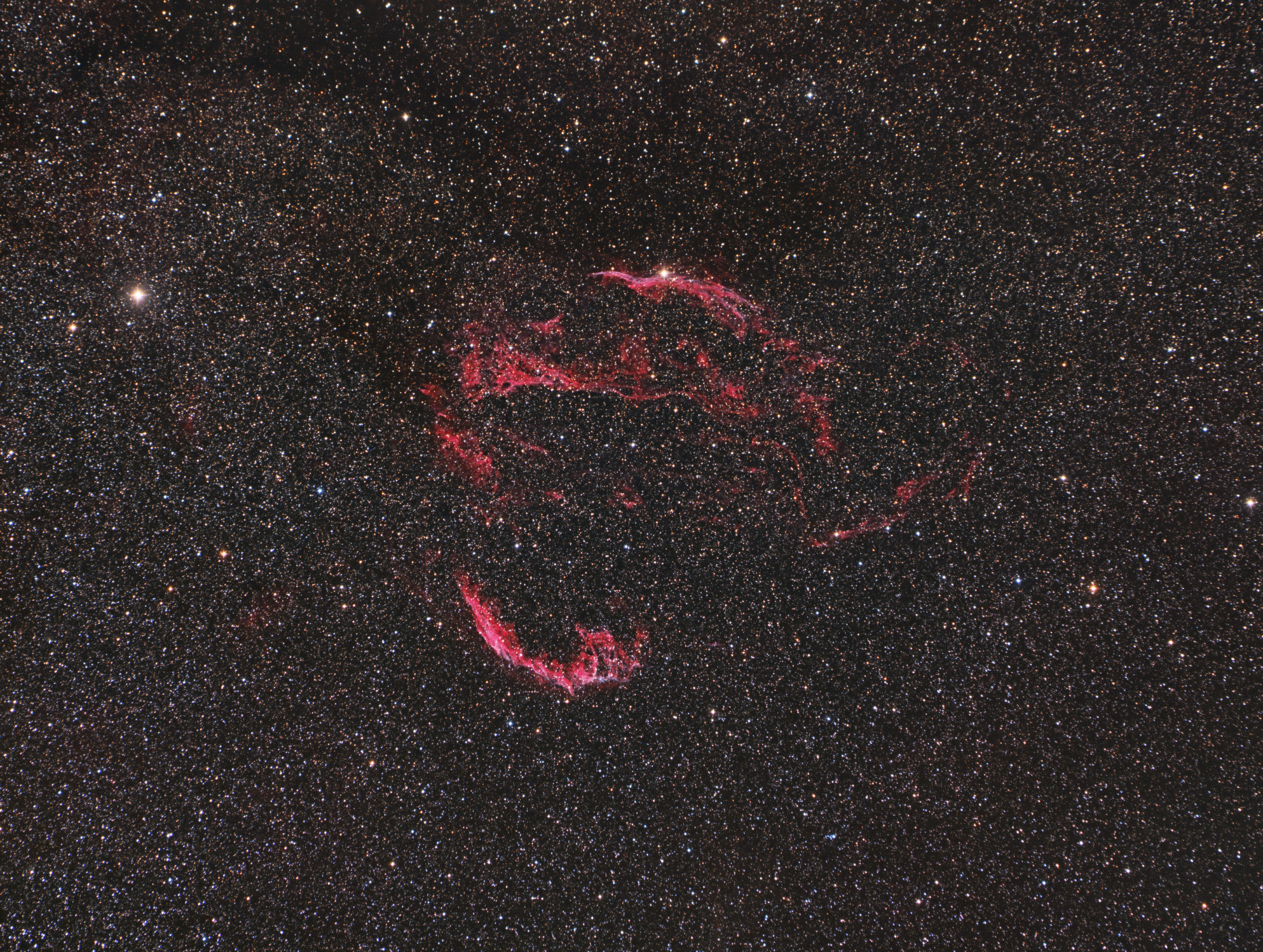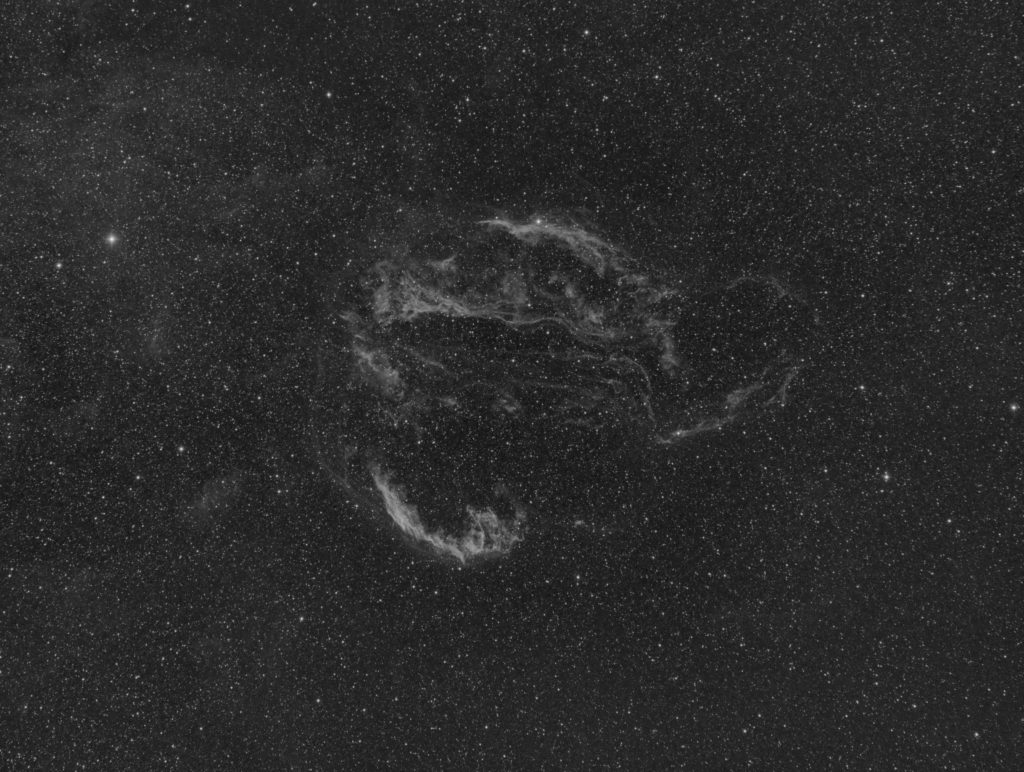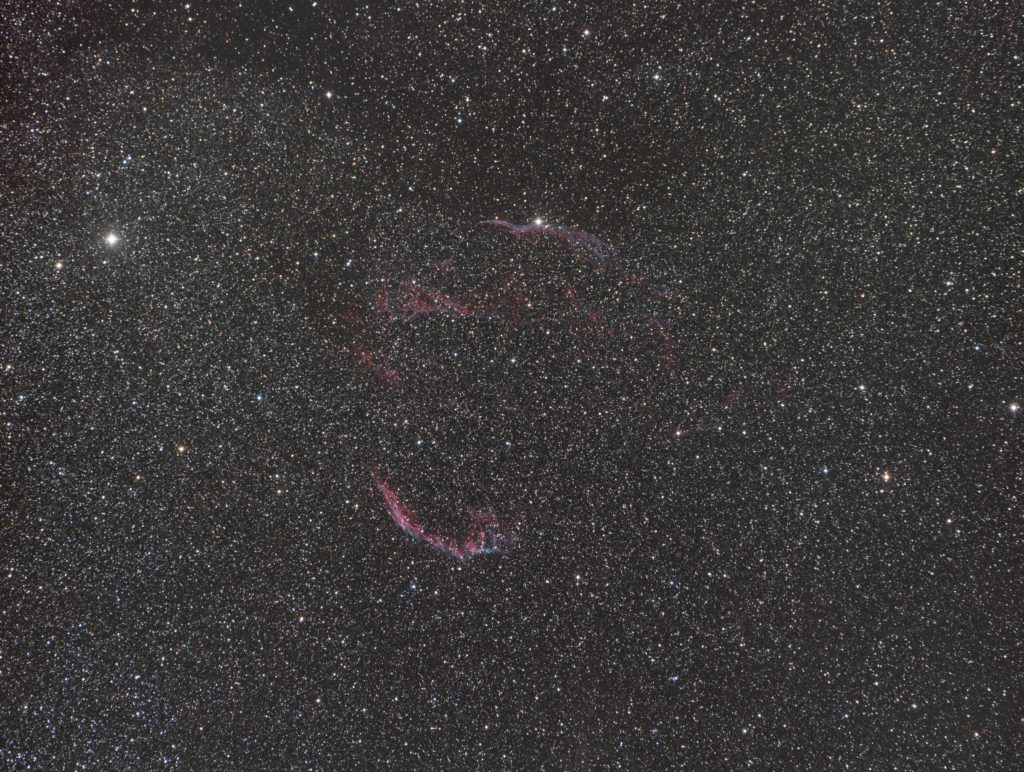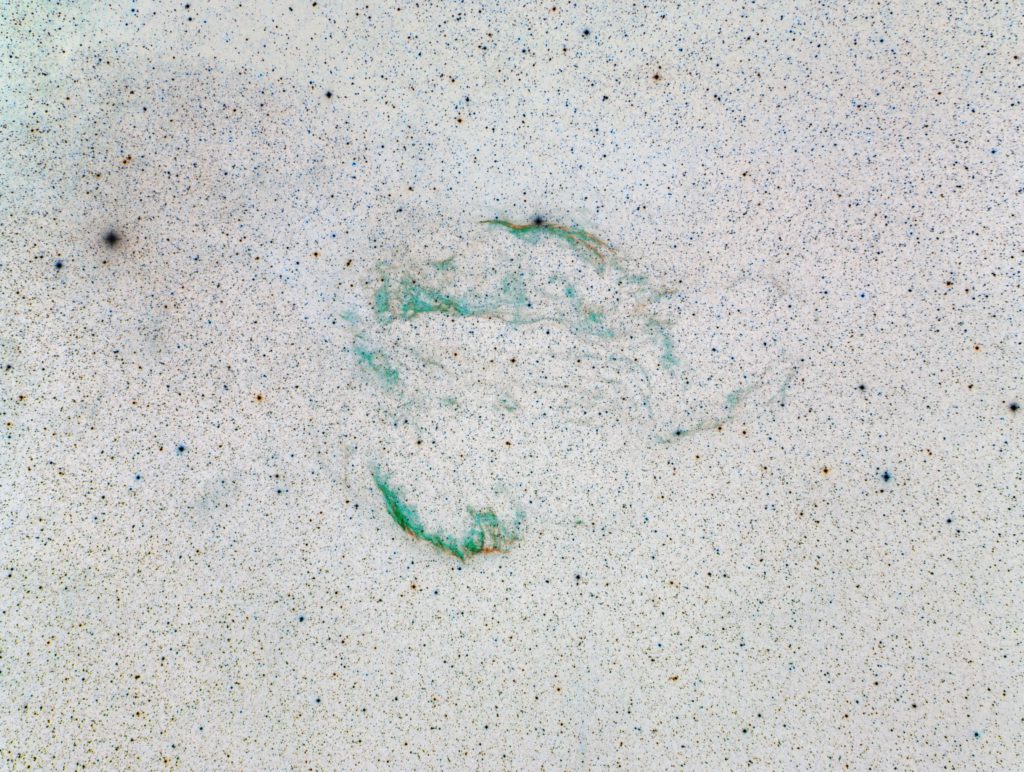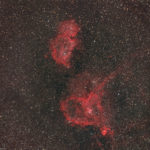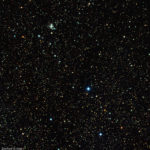The Veil Nebula in Cygnus is the remnant of a supernova of a star about 20 times the mass of the sun that exploded about 20000 years ago. The nebula is a huge, very faint and diffuse object, about six moon widths in diameter and is located about 2500 light years away. Very few telescopes can capture the entire Veil Nebula complex due to the huge angular size that it presents on the sky and creating a multi-frame mosaic is a very time consuming process, especially in the UK where clear nights are such a rare and premium time. This makes DSLR lenses ideal and few are better or as cost effective as the Samyang 135mm that was used to capture this image.
Image Technical Details
The image was captured from my backyard in Nottingham in the UK on the nights of the 13th and 14th September 2020. I left the systems capturing data overnight on an automated basis capturing the Veil nebula and several other targets whilst I was asleep in bed :). I used a Samyang 135mm lens (Samyang = Rokinon in the US/Canada) connected to my Moravian Instruments G2-8300 CCD camera with Astrodon RGBHa (3nm) filters on my NQ6 mount. All exposures binned 1×1:
Red > 14 x 300s ; Green > 14 x 300s ; Blue > 14 x 300s ; Ha > 31 x 300s
Total Integration time of just over six hours. The total width of the image is about 8 degrees by 6 degrees with a resolution of 8.5 arcsec/pixel.
Above are the Ha images made with the Astrodon 3nm Ha filter in the 31mm version. You can see the exquisite detail this filter picks out.
The RGB image is made from 42 x 300s exposures. It carries the colour of the image but is boosted by the blending of the Ha data which adds the punch and vibrancy of the master image at the top of the page.

